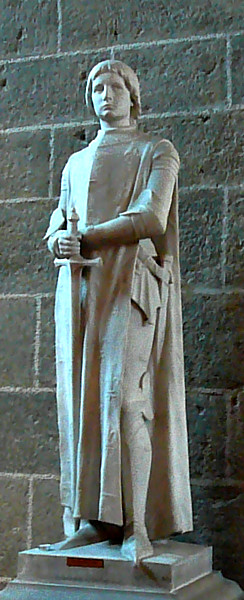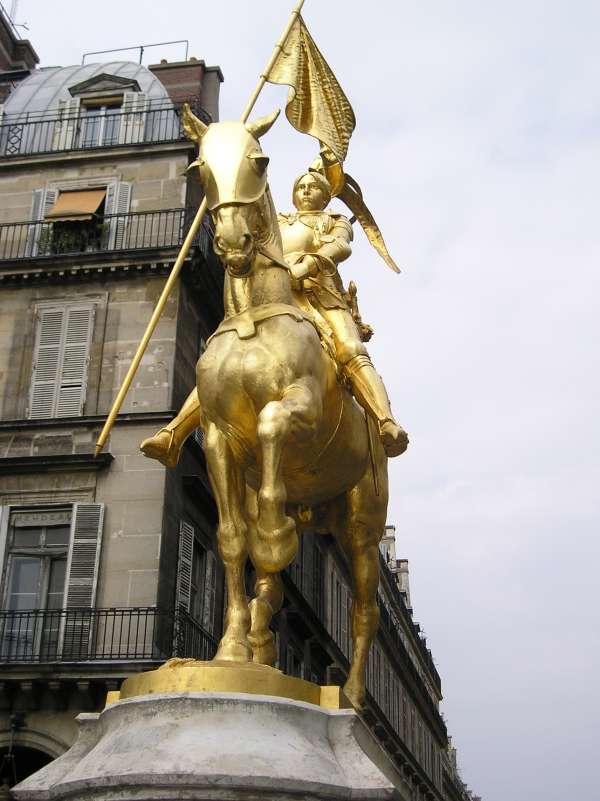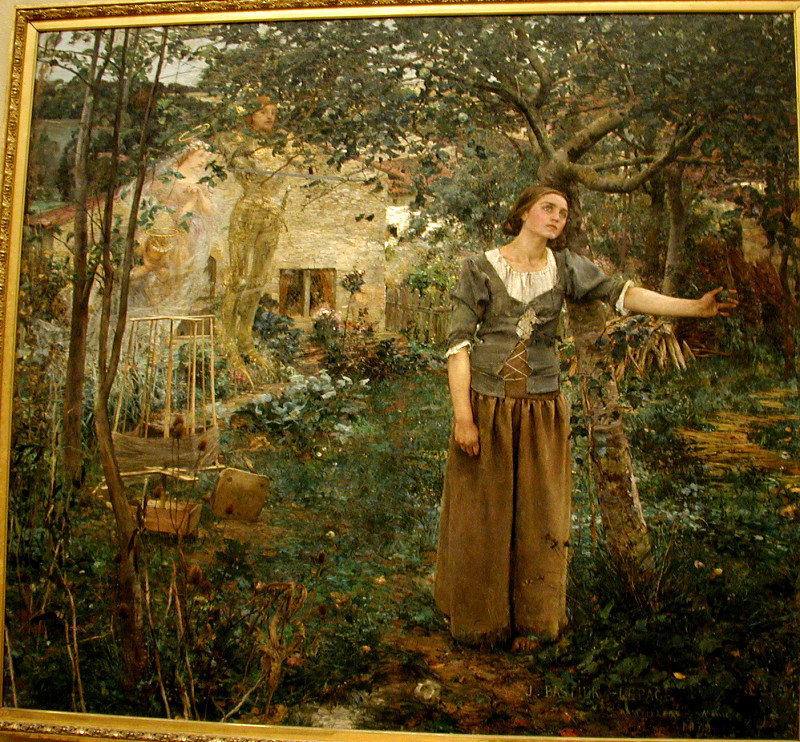In portraits the young St. Joan is usually dressed as a soldier in armor and wears her hair short, as in the first picture at right. She was canonized in 1920, but she had long had a place in French political history. In 1874, after the turbulence of France's defeat by the Germans and the subsequent insurrection in Paris, the French state erected an equestrian statue of Joan in Paris's Place des Pyramides (the second picture at right). The right-wing politician Marine Le Pen used the statue as a backdrop for one of her campaign rallies in 2012; for the 2017 election, she would sometimes hang a huge image of St. Joan in a helmet behind her dais.
Prepared in 2014 by Richard Stracke, Emeritus Professor of English, Augusta University

St. Joan of Arc (See the description page)

The equestrian statue in the Place des Pyramides, Paris (See the description page)

Joan hearing the voices of the three saints (See the description page)
DATES
- Feast day: May 30